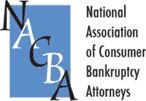
Filing for bankruptcy helps thousands of Americans create a fresh start for themselves and their family members. If you decide that filing for bankruptcy is your best option, you can do a few things to protect yourself and your assets. Many people are concerned about how they will live day-to-day during the bankruptcy process. A person filing for bankruptcy may be concerned that they will have their power shut off because they cannot pay their utility bills, for example.
Part of protecting yourself during the bankruptcy process involves understanding what assets will be exempt from bankruptcy. One of the best ways to learn about what the bankruptcy process will look like for you is to discuss your case with an experienced San Diego bankruptcy attorney.
- Open a New Bank Account
Opening a new bank account can help you protect yourself when filing for bankruptcy. Once you file for bankruptcy, you will benefit from getting an automatic stay against your creditors. When the bankruptcy court receives your petition, they will issue an automatic stay preventing creditors from trying to collect their debt from you. However, some creditors are still legally allowed to take set off against the funds that you owe them.
For example, banks and some savings and loan agencies can withdraw money from a deposit account like a checking or savings account. They may be able to withdraw money from your certificate of deposit or money market account as well. You should consider going to a different financial institution where you do not have any debt and opening a new account.
You can transfer your money into that account, use it for direct deposit, and pay your bills. It is also wise to understand the limitations of bank set-offs. In California, state-chartered savings and loan setoffs are not allowed when a person’s balance of all accounts with the bank is under $1,000.
- Stop Auto Withdrawals
As soon as you file for bankruptcy, it is wise to stop auto withdrawals from your previous unsecured debts or bank. For example, if you have an automatic credit card payment setup, you should stop them when you file for bankruptcy. Instead, you can use your new bank account for auto withdrawals and maintenance debts like your cell phone, car payment, and utility. This simple step will help you avoid the fees and penalties associated with failed transactions. When you are trying to protect yourself in bankruptcy, saving money whenever possible can help you tremendously.
- Stop Using Your Credit Cards
The bankruptcy process will help you start fresh after discharging the large debt that you have already amassed. Do not think about bankruptcy as a way to build up a lot of debt as quickly as you can and then have it all wiped out after the bankruptcy. If you began using your credit cards and rack up more debt right before filing for bankruptcy, you could face charges for bankruptcy fraud. Credit card companies can dispute the debt that you racked up right before filing for bankruptcy.
As a result, you may not be able to get it discharged through the bankruptcy process. For example, suppose you plan on filing for bankruptcy and decide to max out your credit cards by purchasing a vacation in the weeks or months before you file for bankruptcy. You could face serious federal fraud charges, and a dismissal of your bankruptcy.
- Keep Some Cash on Hand for Utility Payments
Many people who filed for bankruptcy are behind on their utility payments. Your provider will not be able to try to collect the debt you owe them. However, if you have already made a deposit, your utility provider can use that deposit as a partial payment on your debt. This will still leave you behind overall for next month’s bill. The provider can ask for a new deposit. If possible, you should try to bring all of your utility bills current before you file for bankruptcy or have cash on hand to pay for them going forward.
Create a Budget Your Can Use Effectively
One of the most important steps you can take during the bankruptcy process is to create a realistic budget. The type of budget you create depends on which type of bankruptcy you are pursuing. If you are filing for chapter 13 bankruptcy, you will need to create a budget based on your monthly payment to the bankruptcy trustee. Your monthly payments into your chapter 13 bankruptcy plan will be calculated by deducting your personal and household expenses from your take-home pay. The resulting sum is your disposable income.
Some of your disposable income can be used for discretionary spending, but if you need more disposable income to pay into your chapter 13 plan, you will need to cut back on some of your discretionary spending. The budget you come up with needs to be realistic so you can maintain making your payment for the next few years. If you are unable to make your payments, you will not be able to successfully have your debt discharged at the end of the chapter 13 plan. Creating a budget is also important if you are filing for chapter 7 bankruptcy.
- Provide Honest and Accurate Information to the Bankruptcy Court
As you begin the process of filing for bankruptcy, it is important that you remain honest and provide accurate information to the court. You will need to provide a significant amount of information about your financial circumstances to the court. Do not try to hide assets or give your property to your friends or family members. Doing so can be considered bankruptcy fraud. It is also essential that you are honest about your expenses and income sources. Make sure you include every source of income, even if you are only working part-time or as an independent contractor. If you have questions about presenting your information to the bankruptcy court, we recommend speaking to a bankruptcy attorney.










